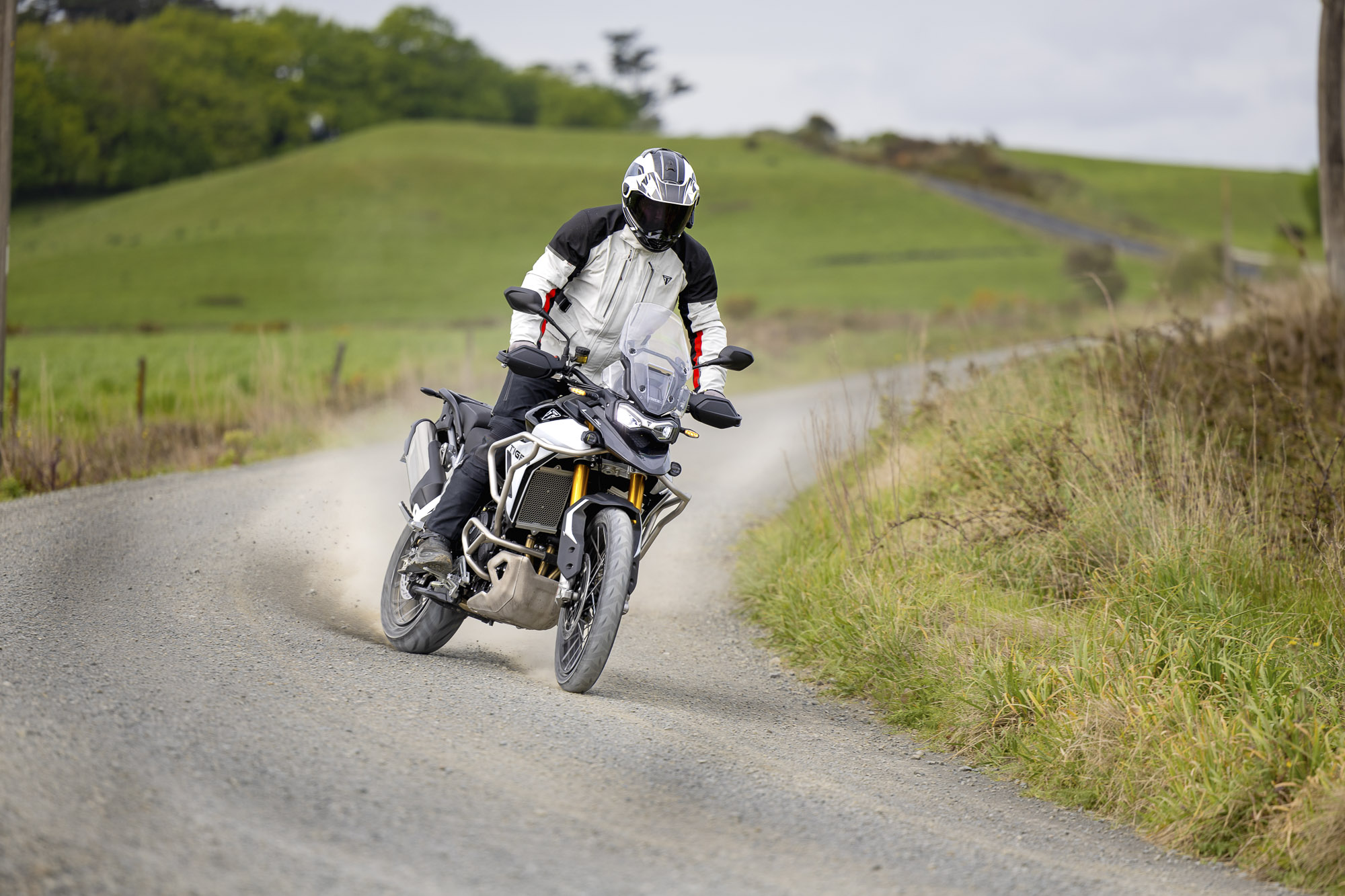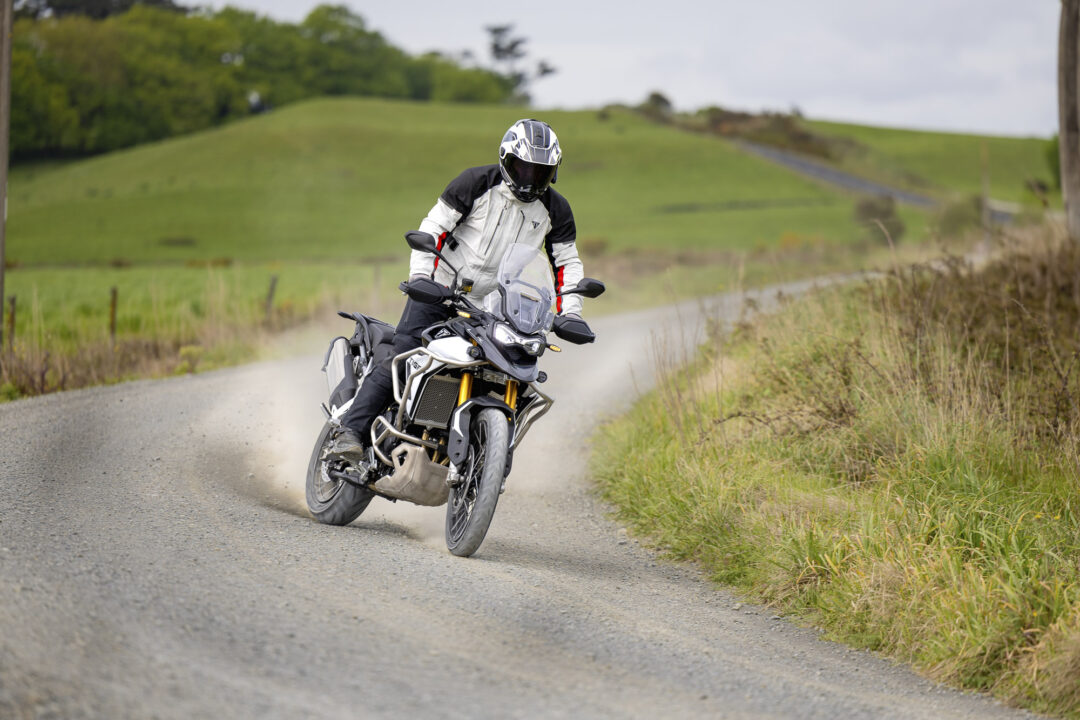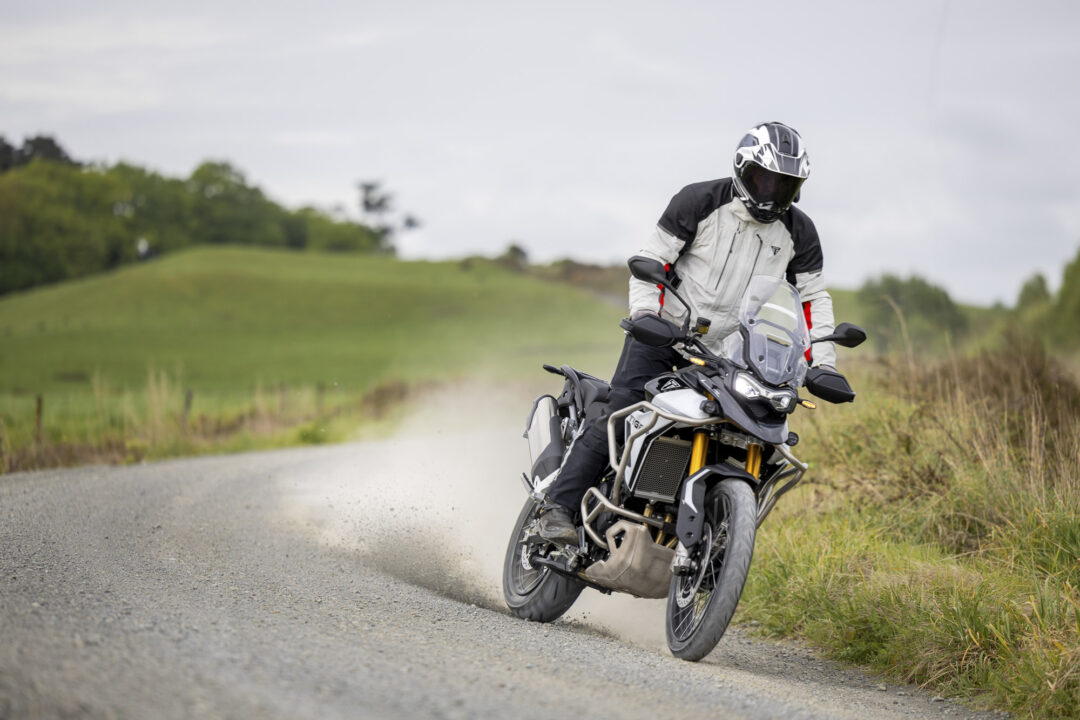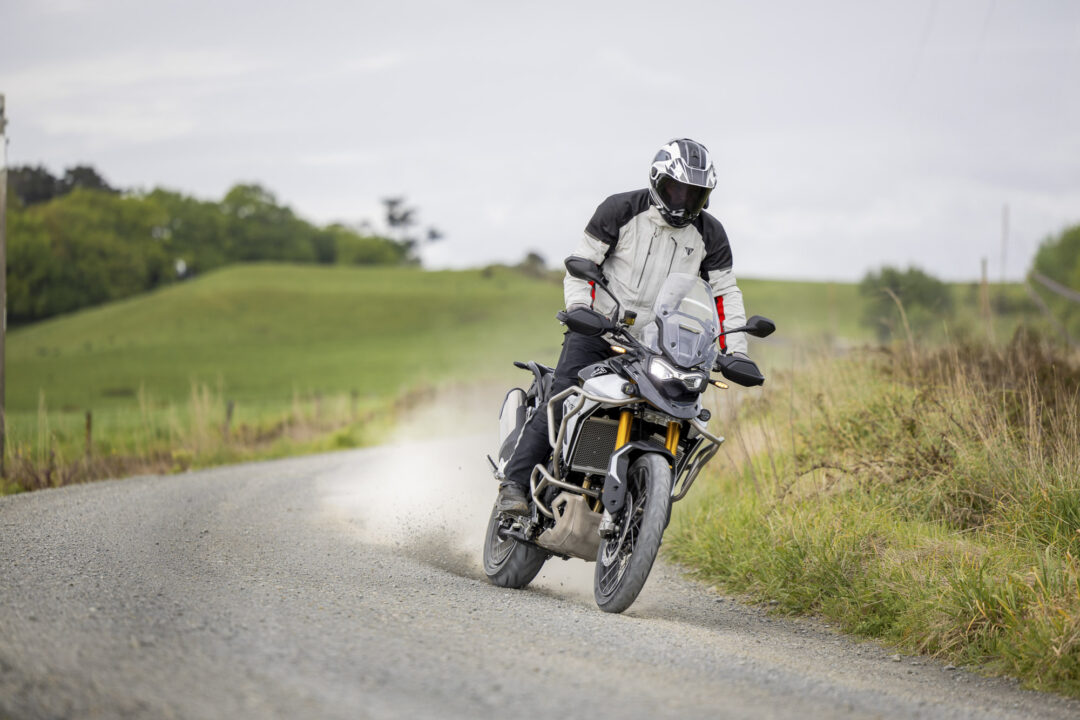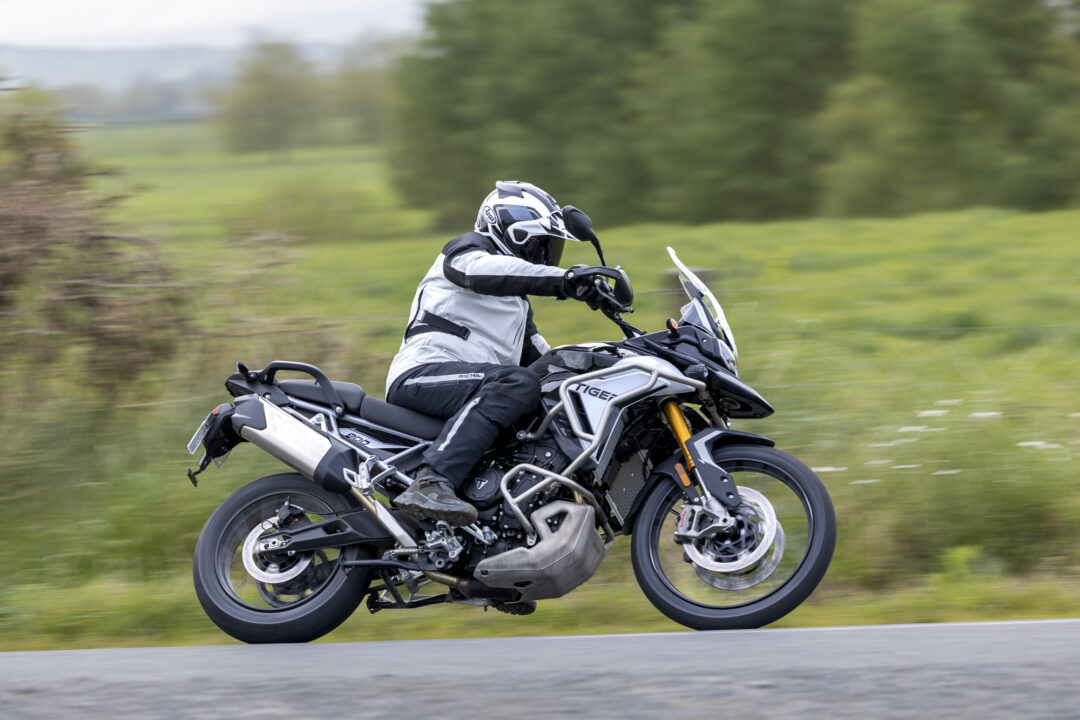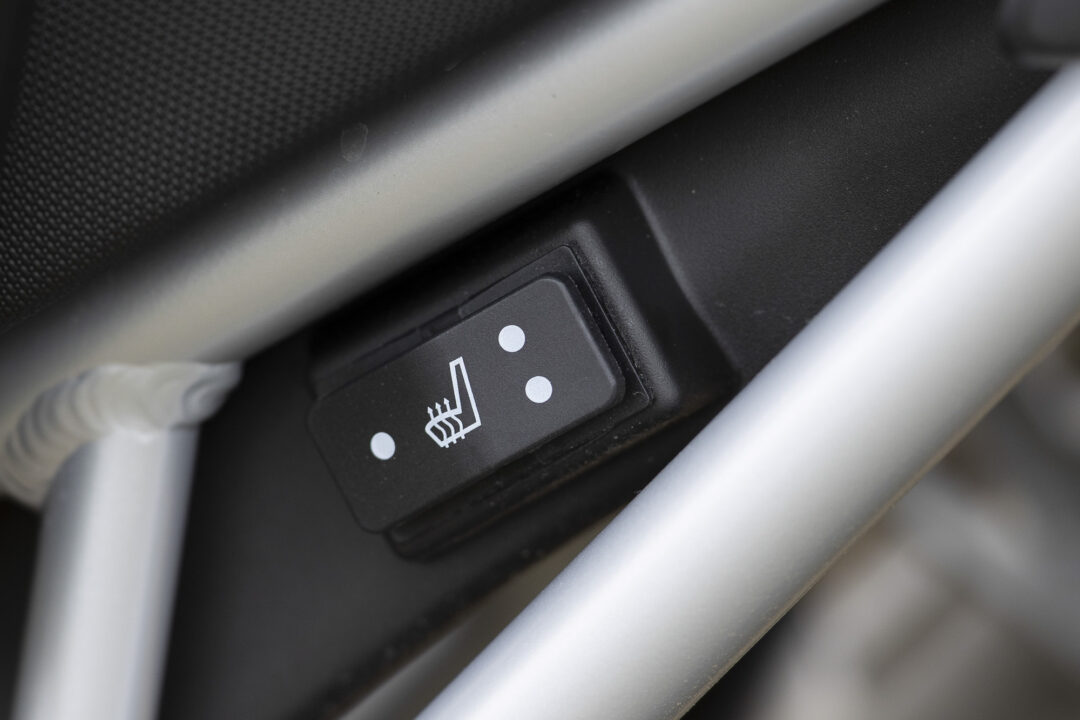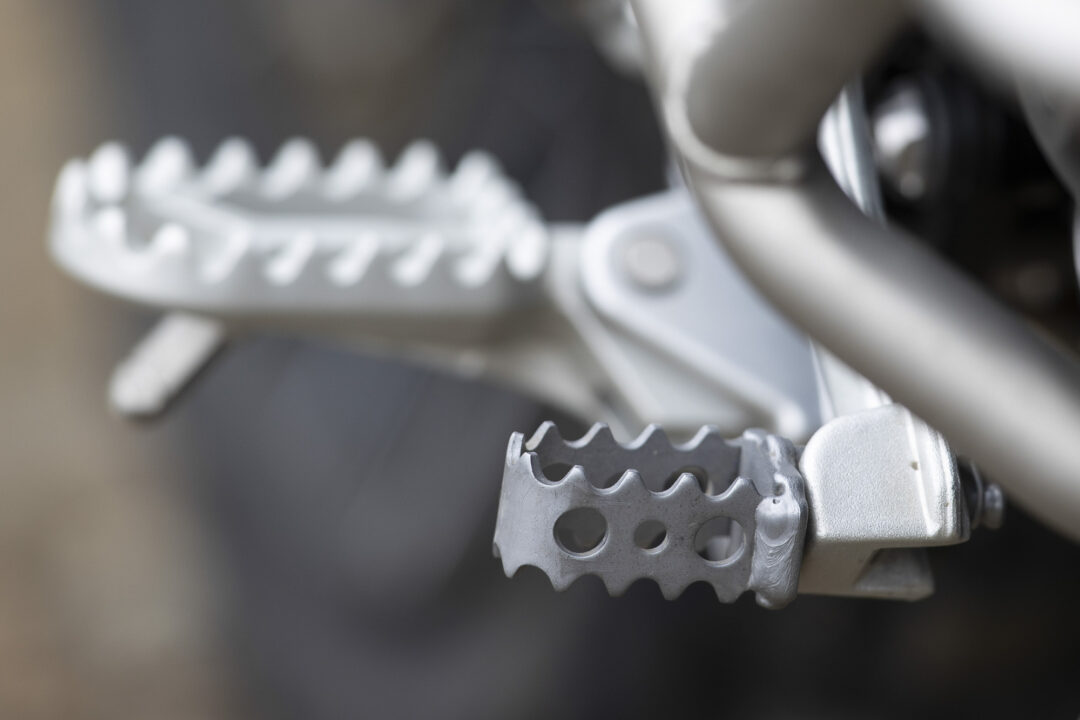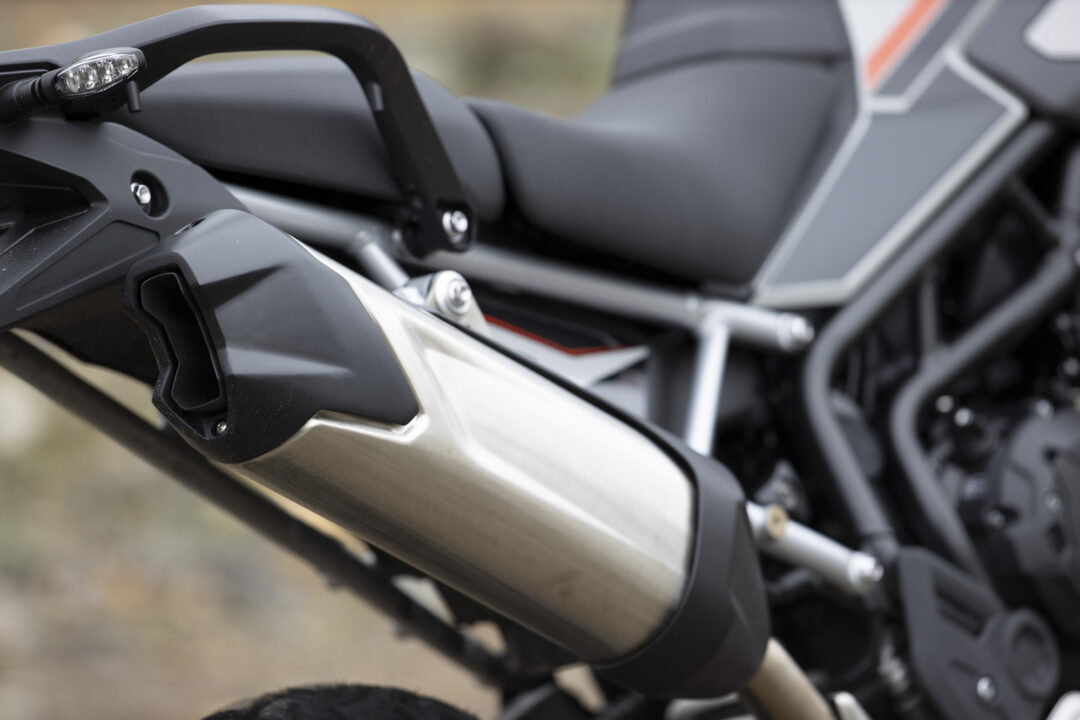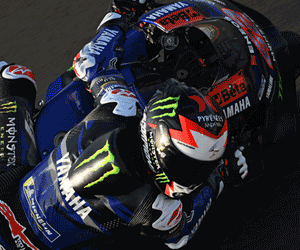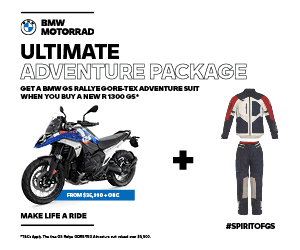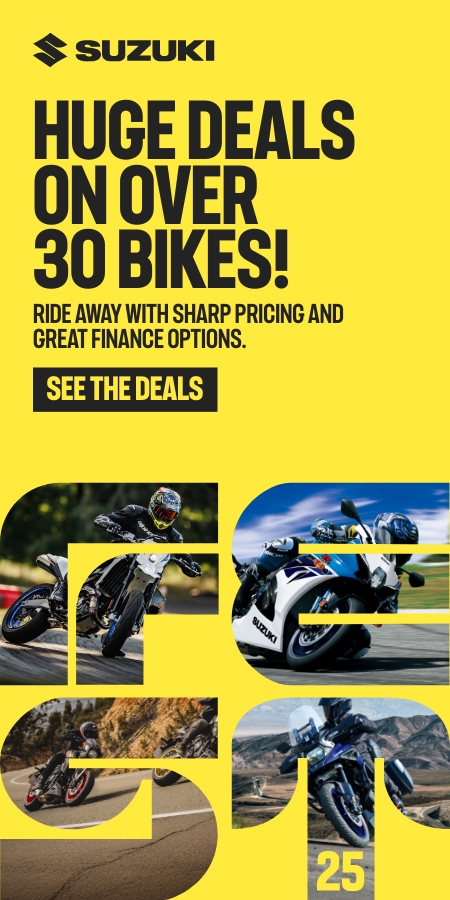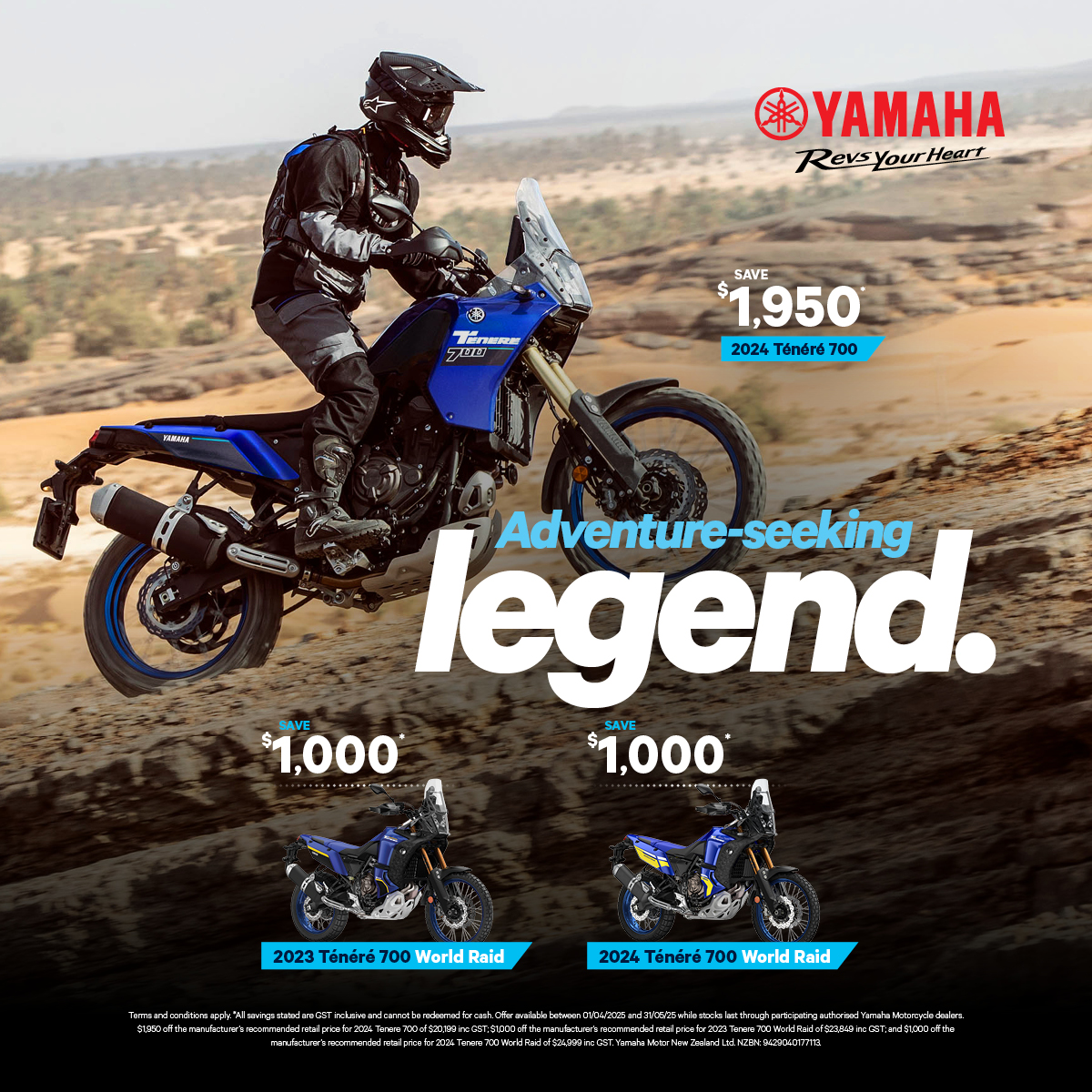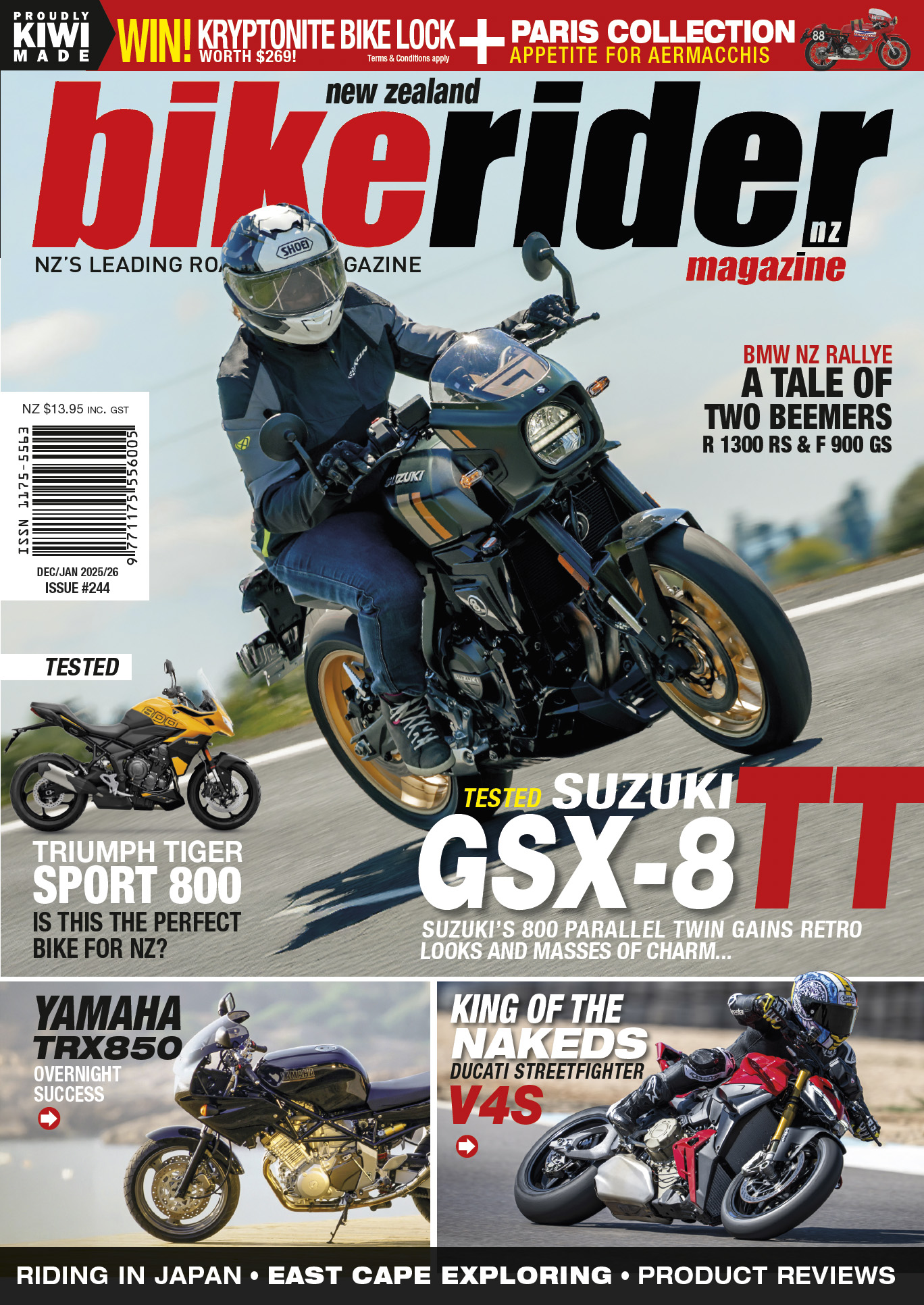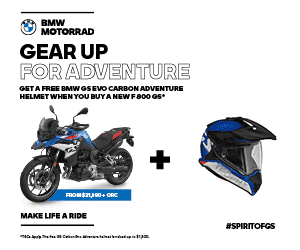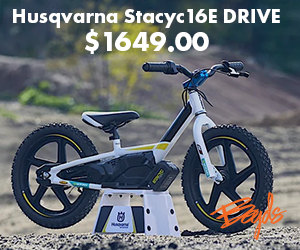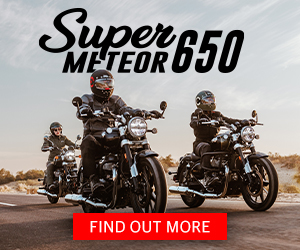- Updates to powerplant give 13% more power than the previous version.
- 93hp @ 8,750rpm / 90Nm @ 6,850rpm.
- 6-axis IMU offer lean-sensitive electronics.
Described by Triumph as being more powerful and more capable than ever before, the current triple ‘mid-weight’ adventurer still looks a bit posh to throw at any rugged trails. Yet, that’s not to say it can’t…
I was pleased to see optional crash bars had been fitted to the Triumph Tiger 900 Rally Pro when I collected it from Triumph NZ and readied myself for an adventure. Although, looking at the Bridgestone AT41 dual-purpose rubber fitted to the spoked wheels of the test bike, it was apparent that any adventuring was going to need to be on the mild side.
At a glance, there doesn’t seem to be that much difference between the previous 2023 version and this model, and that’s because it’s the motor’s internals which have been toyed with. Within the confines of the T-plane triple a bit of magic has been worked by the engineers furnishing the triple with 13% more power, seeing maximum output jump from 93hp @ 8,750rpm to 106.5hp @ 9,500rpm. At the same time, torque has also seen a boost with a max of 90Nm developed at 6,850rpm (from 87Nm @ 7,250rpm) producing more flexibility and traction lower in the rev range. And somehow, they have managed to achieve this while also providing a 9% boost in fuel economy from the 20-litre tank, giving a claimed 4.7litres / 100km, which should see 400km easily achievable before the panic sets in.
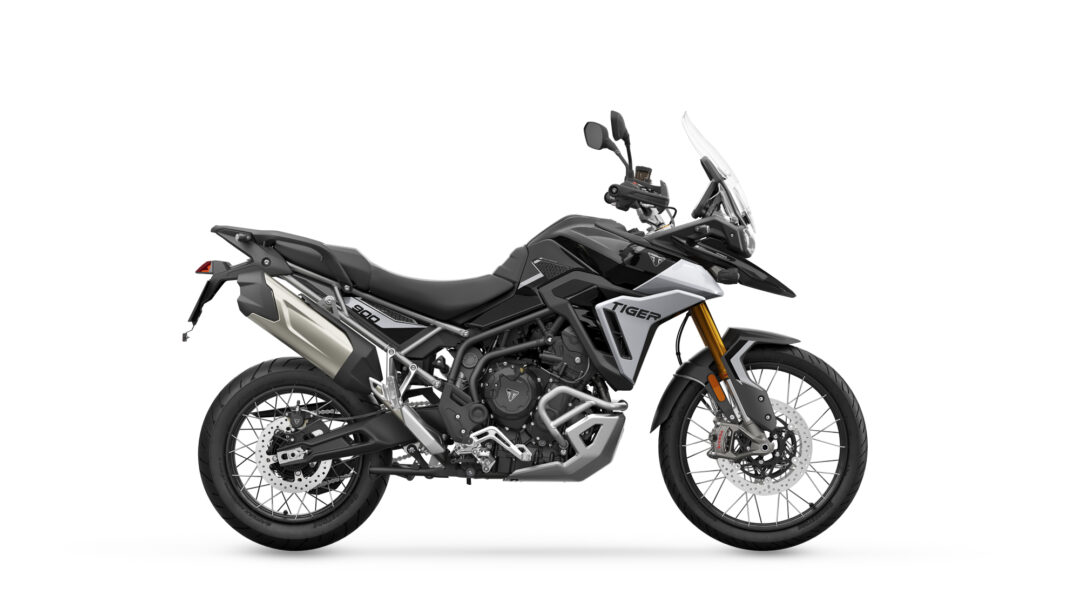
The off-set firing order of the 888cc triple, thanks to that T-plane crank, is one of the highlights of the Tiger 900, releasing the true potential of the model when they changed the beat of the three cylinders back in 2020. And it made a huge difference to the way the Tiger performed both on- and off-road, with the performance in the lower-end of the rev range markedly improved over the model with the traditional firing order. Oh, and another advantage is that it sounds grouse, something I was pleased to hear again after grabbing my adventure gear and firing the new Tiger into life.
The electronics have also been improved, with a large 7-inch TFT dash now featuring new graphics and a revised menu system to make adjusting the settings easier to manage. With an IMU making the rider aids lean-sensitvie, the Rally Pro gets the full suite of electronic goodies including cornering ABS, traction control and a heap of riding modes. While all the Tigers get Road, Rain, Sport and Off-Road, the Pro models get a Rider Configurable option, while the Rally Pro goes one further with an Off-Road Pro setting. Each mode changes parameters like the throttle response and the level of intervention from the electronics, while the Off-Road Pro setting really allows the rider to delve into the system and set the bike up for serious off-road work where you don’t want the electronic brain chopping power simply because the rear wheel is losing traction or running over corrugations. Swapping modes is done by hitting a button on the righthand switchblock which then brings a picture up on the dash to let the rider know what you’re about to select. Then it’s a matter of rolling off the throttle for the selected mode to kick in, that is, as long as you’re not swapping from a road setting to a dirt mode. That requires the bike to stop, I imagine so the sensors can be turned off for the dirt options, which then lets the rear wheel spin. It’s a bit of a pain, but it is not the end of the world.
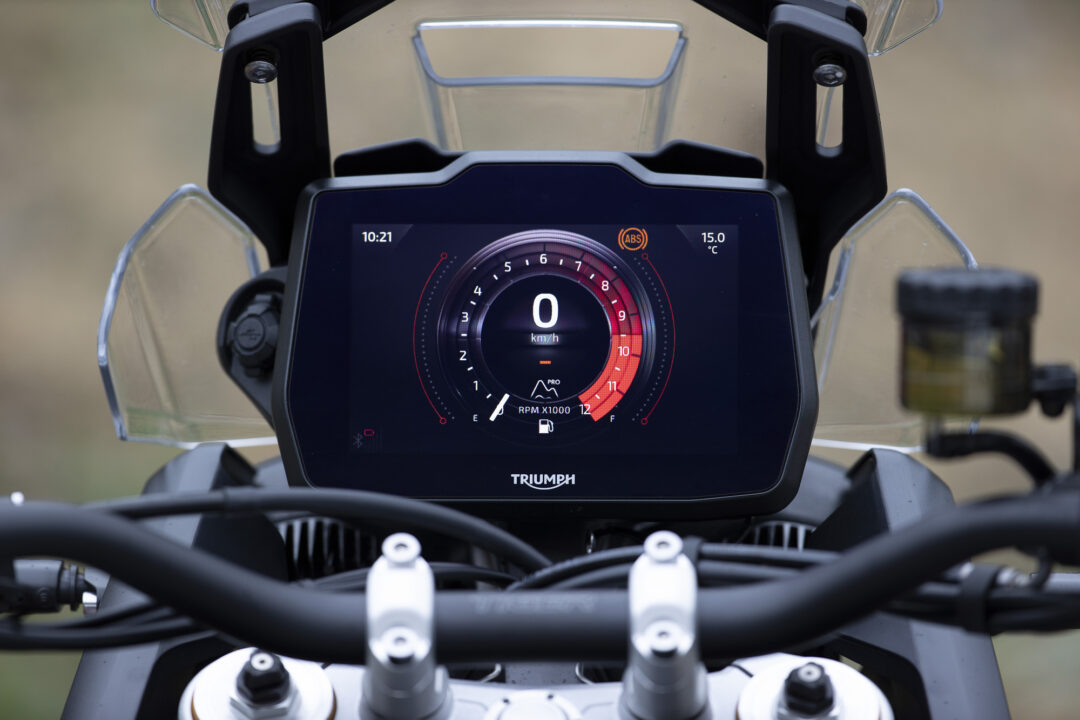
Despite being the middleweight – and the Rally Pro is reasonably light at 228-kilos with a full 20-litre tank of gas – the Tiger oozes so much quality that you’d think it was the flagship model. The spoked tubeless wheels look the part, while the tubular trellis frame complete with bolt-on (or bolt off if you damage it…) subframe pokes out from beneath the bodywork and looks very cool. Serious Showa 45mm forks gleam in gold and are fully adjustable while giving 240mm of travel. Showa also supply the shock which is adjustable for preload and rebound damping while offering 230mm of travel, so the Rally Pro has the goods if you’re planning to hit the rough stuff.
The brakes, however, look like they’ve been pulled off a superbike, with the twin Brembo Stylema 4-piston calipers featuring a radial front master cylinder and gripping 320mm discs. That set-up is enough to see a sportsbike standing on its nose, which could possibly be an issue of the loose. Thankfully, a decent level of feel through the lever meant I never felt like I was inadvertently going to give it too much. The engine, however. Well, that’s another story.
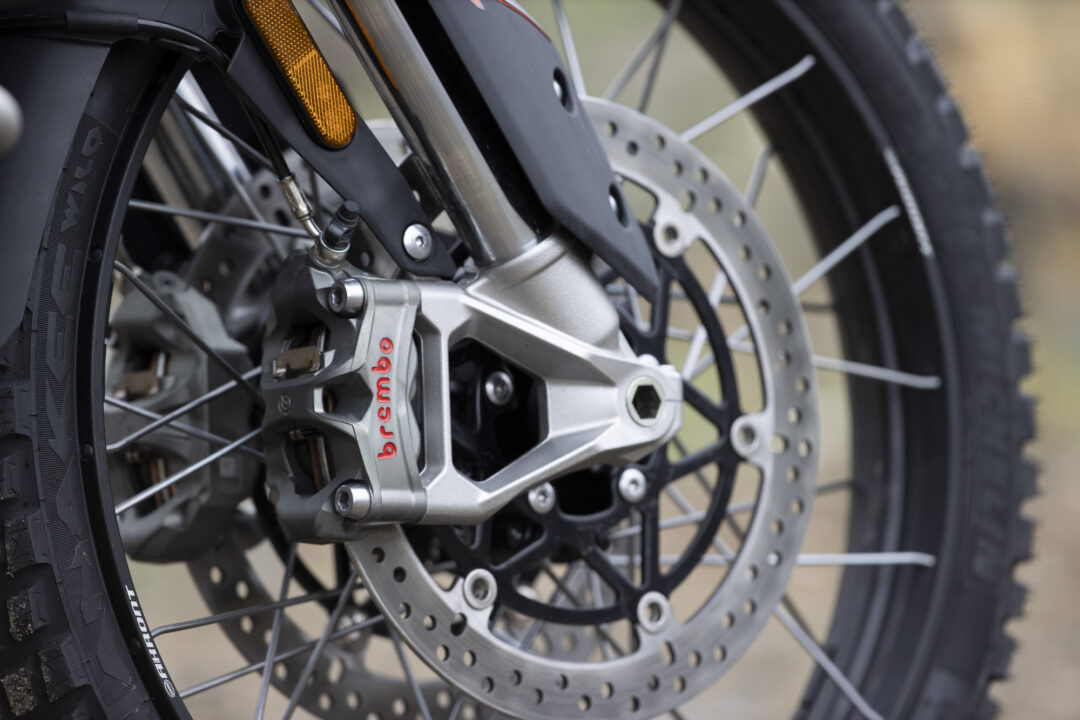
Local Travels
Despite being in the suburbs of Hamilton, there are, thankfully, some seriously good backroads and a fair sprinkling of gravel, all within reach of a cheeky afternoon out of the office. Yet, with temperatures at the time I was testing the Tiger still on the frosty side of ‘OMG IT’S COLD’, I was pleased to discover the Tiger not only has heated grips but also a heated saddle, with both easy to activate. The screen also offers a decent level of protection from the wind, so it was a cozy place where I found myself when heading off for a quick jaunt.
Mike from Triumph mentioned he’d put the saddle on the lower setting when I picked it up, although I had trouble believing him as I was on the verge of tiptoes pulling up to a stop. With a range of 860mm-880mm available, I think the tall setting would only be required by the real giants out there or for maybe when you’re riding long periods standing on the pegs where the additional height would certainly help the transition between seated and standing. Once up and running, the riding position is typical adventure, although I’d probably roll the bars forward slightly if I was doing more standing than sitting to avoid a sore back. As it was, the heated cossetted time I spent in the saddle was a nice way to travel.
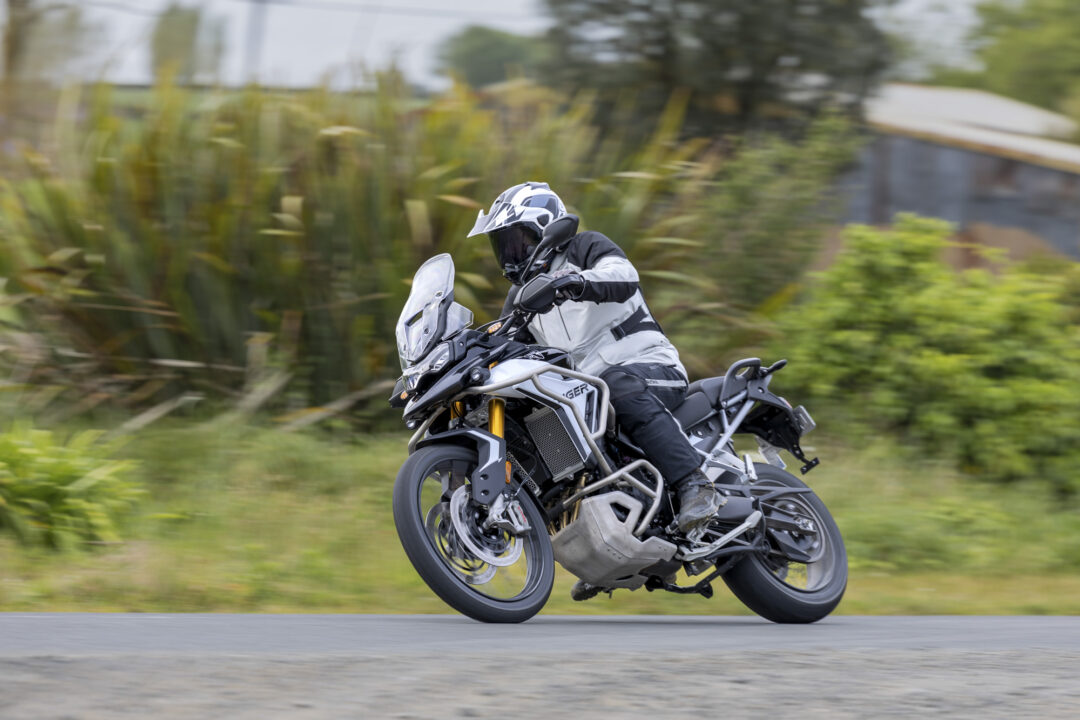
Flicking off the State Highway and into a series of backroads which offer a mix of some great corners combined with seriously shitty road conditions where you never know what’s going to be around the next apex, the Tiger demolished the route at an astonishing pace. The more powerful triple is addictive not only with its noise but also the way it produces power, offering a torquey bottom-end punch followed by a howling top-end, meaning it doesn’t matter if you bother the quickshifter for another cog or not. And changing back down while using those awesome Brembos sees the Showas put to the test, with the extra travel of the Rally Pro giving a serious level of dive when pushing the ABS to its limits. It was here I was thankful for the more road-orientated Bridgestones which I know can be pushed hard on the tarseal, and despite the tall 21-inch front wheel of the Tiger making the switch from one lean angle to the other require slightly more input than a smaller 19 or 17-inch wheel, I was looking forward to finding some gravel and seeing how the Rally Pro coped getting dirty.
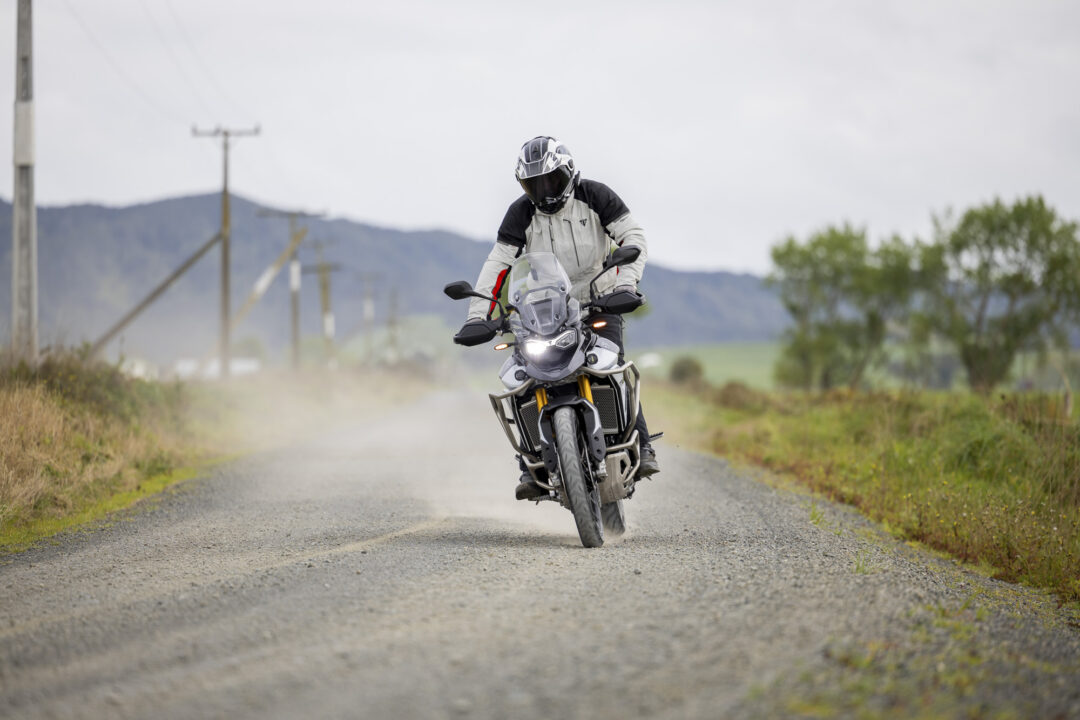
Looking For Trouble
Unlike KTM’s 890 Adventure which looks like it’s built to be thrown at logs, banks and bushes, the Triumph Tiger looked almost a little too polished and finished compared to the black plastics of the Austrian. Still, in the name of testing I took a swallow and hit my first gravel section without a flicker of motion from my throttle hand, instead keeping the Tiger going at the same pace with which I’d just left the tarmac. And you know what? The bike barely noticed. Okay, I really needed to stop and switch modes to get the full sliding benefit of the Off-Road Pro settings where I could light the rear wheel up some more and de-activate the rear ABS, but Road mode was enough for me to continue through the section of gravel before blasting out the other side and continuing on as if it didn’t even exist. Yep, this is a fully-sorted adventure traveler.
There are compromises to be made with the Rally Pro, especially in the suspension department, which, on the road, doesn’t feel like it properly settles down and soaks impacts up until you’re pushing on due to the increase in damping and spring rate for when you’re using it for jumping logs or crossing rocky rivers. So it’s a little firm at a regular pace. And the 21-inch wheel is another obvious one, with the smaller 19-inch cast aluminium item on the more roady GT Pro likely to be much better on the tarseal. But if you remotely head off the beaten track then the Rally Pro is the one you want, with the upgrade of the Showas giving it the feel that you can really tackle any form of adventure, as long as you’re happy to do it on the 228-kilo machine. So, for most of us, that means some decent gravel and maybe a bit of farmland. And for that, the Tiger is now better than ever.
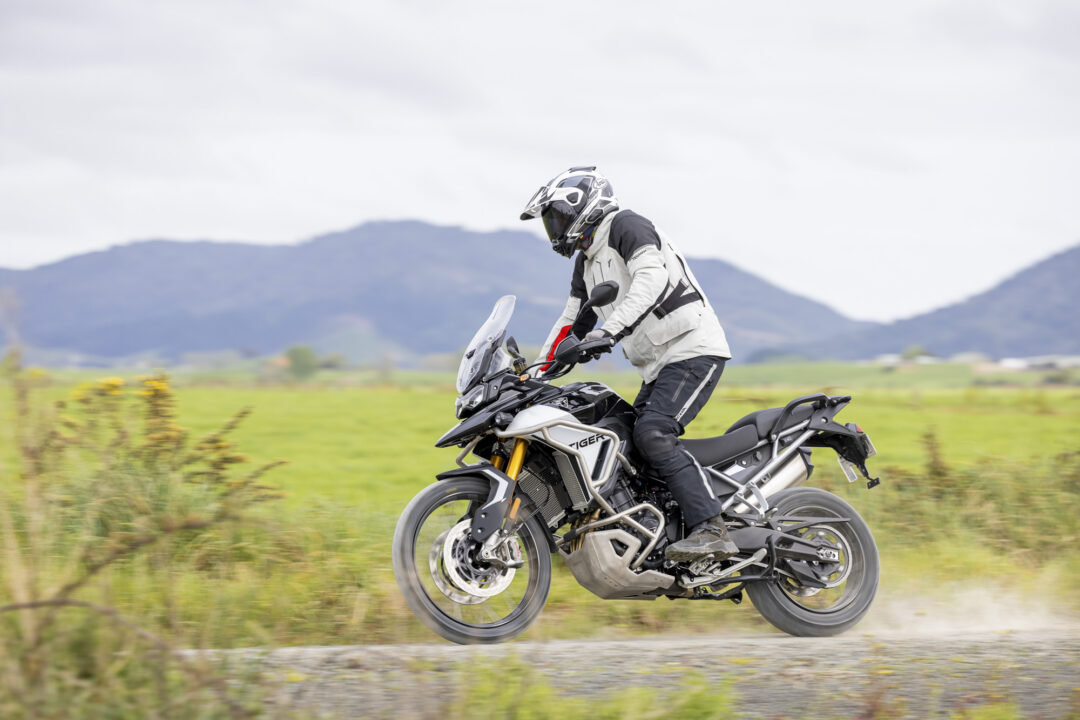
Despite the new 7-inch TFT dash, I’m still not the biggest fan of the dash set-up as, given the additional real estate, I’d like to have more information available to me. Pride of place is a round dial which you can change the colour of, but that’s about it. If you want to include extra trips or info on the screen, you can select it via the joystick on the left switchblock, but it then moves the speedo/rev counter combo over to the side and squashes it, making the round circle a weird oblong. For me and my structured brain, that’s just wrong. So I go back to having a simple speedo and no other info, which is a shame.
The mode you’re in is shown via a picture (straight road = road mode, speedo = sports, mountain = off-road), and you can toggle up and down with the joystick, although it’s not the sort of system which will see you swapping into sports as a delicious set of corners approach and then flicking back to road as you peel out the other side. It’s just not that quick to swap at a whim. And anything off-road requires the bike to be stopped.
There’s been a few changes to the bodywork for 2024 which you’d probably need them side-by-side to really appreciate, but the new tip of the exhaust looks trick, as does the LED lighting.
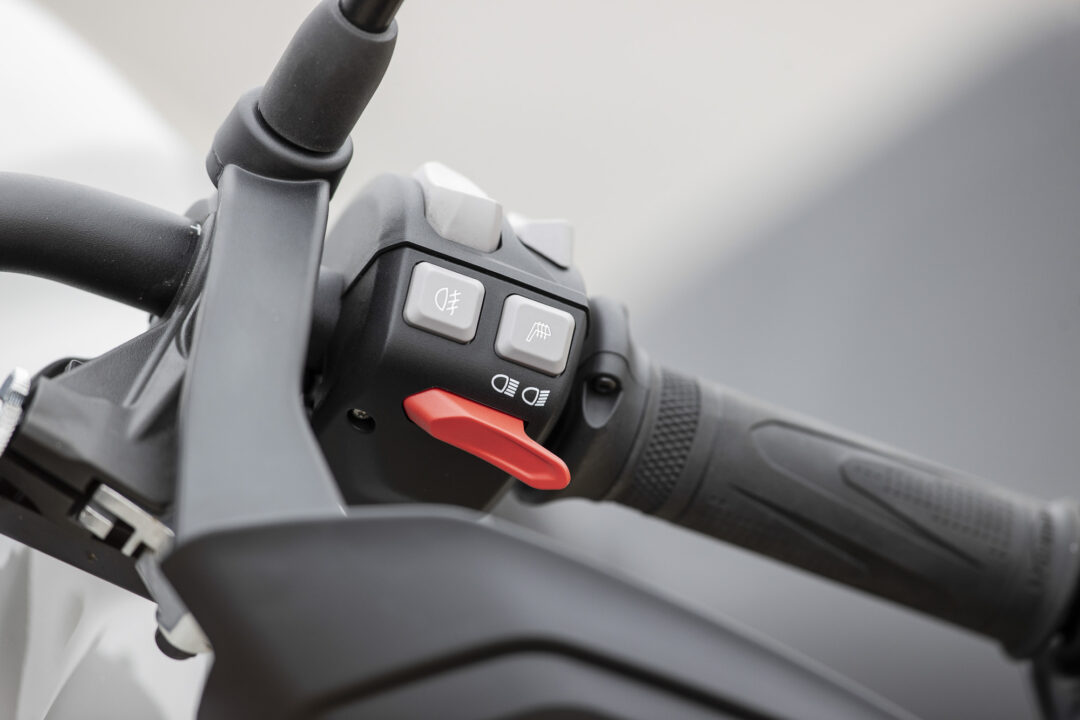
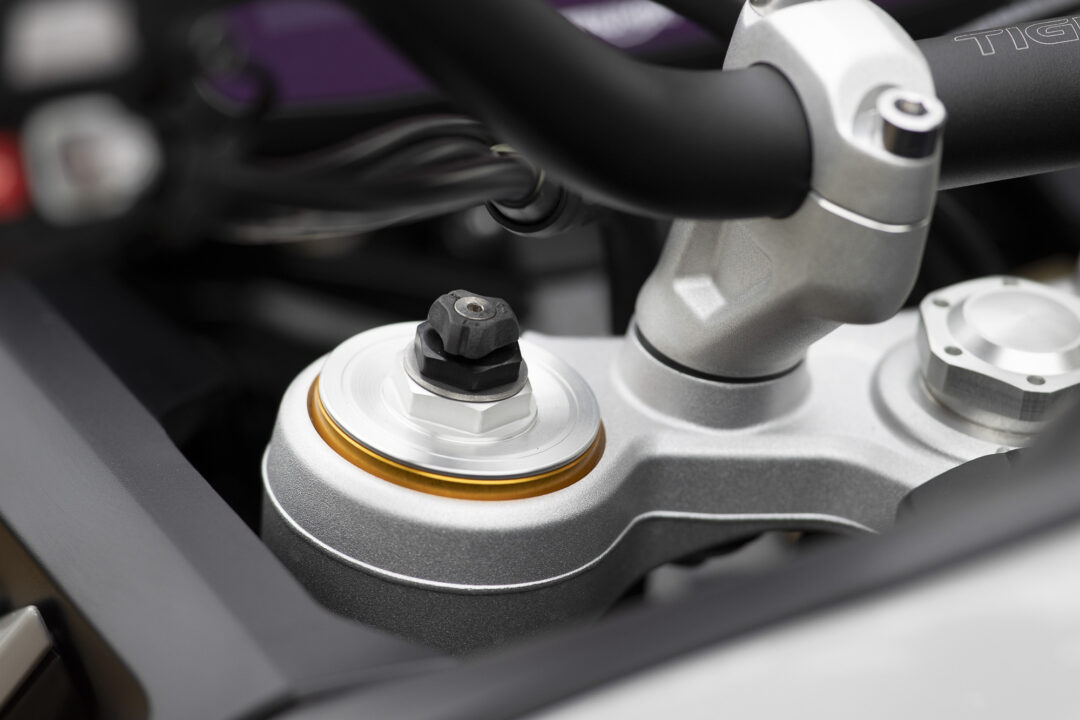
Tough Competition
This segment is getting packed with high-quality and really sorted models, with the Tigers from Triumph more closely matched than ever to KTM’s 890 Adventure and BMW’s F900GS. They are all excellent bikes packed with electronic goodies and capable of carrying a rider, pillion and luggage across the plains of Hamilton or the plains of Africa. To be honest, they’re much more capable than the majority of the owners out there, including myself. I can scratch the surface of the new Tiger’s off-road ability, but without a set of knobblies fitted and a disclaimer that I wouldn’t be strung up if I returned it a bit battered and bruised, pushing the new bike’s limits on typical Kiwi gravel roads is as far as I could get.
Where it’s easy to see the Tiger wins in this segment is the motor. The three-cylinder T-plane not only sounds great but is a real giggle on the road and a complete maniac in the gravel. The twin-like low-down stomp works well to give the rear wheel traction when you need it, while the top-end power gives it a Jekyll & Hyde quality that I grew to love, as it’s ready to deliver when all you want to do is break traction… And despite the off-road slant of the Rally Pro, it was still plenty fast enough to class this as a quick road bike that will give most other things a run for their money in the right hands.
If you like your adventure travel to feature a bit more quality and character, then the Tiger 900 is probably the pick of the segment for you. The triple is much more entertaining than a parallel twin, while the rest of the bike feels well put together or sorted. Just so long as your legs are long enough…
Words: Paul Pics: Two Creative Photography
SPECIFICATIONS
Tiger 900 Rally Pro
Price: $27,990 + ORC
ENGINE AND TRANSMISSION
Type 888cc, liquid cooled, 12 valve, DOHC, inline 3-cylinder
Bore x Stroke 78.0 mm x 61.9 mm
Compression 13.0:1
Maximum power 106.5bhp @ 9,500rpm
Maximum torque 90Nm @ 6,850rpm
Final drive O-ring Chain
Gearbox 6 speed
CHASSIS
Frame Tubular steel trellis main frame. Fabricated, bolt-on aluminium rear subframe
Swingarm Twin sided cast aluminium swingarm
Wheels Spoked tubeless, 21 x 2.15in / 17 x 4.25in
Tyres Bridgestone Battlax Adventure 90/90-21 / 150/70-R17
Front suspension Showa 45mm upside down forks, manual preload, rebound and compression damping adjustment, 240mm travel
Rear suspension Showa rear suspension unit, manually adjustable preload and rebound damping 230mm wheel travel
Front brakes Twin 320mm floating discs, Brembo Stylema 4 piston Monobloc calipers. Radial front master cylinder, Optimised Cornering ABS
Rear brakes Single 255mm disc. Single piston sliding caliper. Optimised cornering ABS
Instruments Full-colour 7” TFT instrument pack with My Triumph Connectivity System
DIMENSIONS AND WEIGHTS
Length 2317 mm
Width (handlebars) 935 mm
Height without mirrors 1452 mm – 1502 mm
Seat height Adjustable 860-880 mm
Wheelbase 1551 mm
Rake 24.4°
Wet weight 228 kg
Fuel tank capacity 20 litres
Fuel Consumption 4.7 litres / 100km
Contact www.triumphmotorcycles.co.nz

